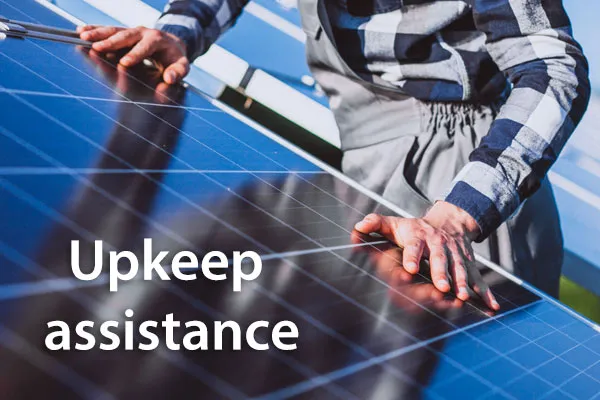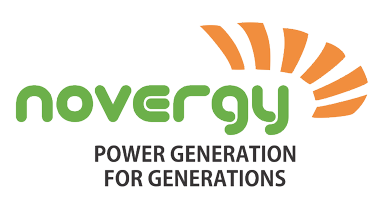India has set a goal of producing 100 GW of grid-connected solar energy by the year 2022, of which 40 GW is expected to come from rooftop solar installations. Demand has been growing in the rooftop solar industry as a result of a number of factors, including frequent power outages, rising costs of conventional power, high radiation levels, and the declining cost of solar energy.
One approach to establishing rooftop solar panels is the RESCO scheme. The rooftop solar power project (the “Project”) is developed, installed, financed, operated, and owned by the renewable energy service company (or “RESCO”) under the RESCO model. The power generated by the Project is supplied to the consumer on whose premises the Project is installed (the “Customer”) or to the grid through net metering.
What is a RESCO Solar Model?
The Renewable energy service company (RESCO), model is a zero-investment approach in which the user pays solely for the power generated, but the solar plant is held by the RESCO developer, in contrast to a solar EPC or Capex offer, where the consumer owns the system and invests upfront. All you have to do in exchange is pay a pre-set monthly rate that is less expensive than the current grid electricity tariff.

A RESCO MODEL’S CHARACTERISTICS:
Resco PPA:
In a unique type of RESCO model known as “Build, Own, Operate and Transfer” (BOOT), the RESCO builds, owns, operates, and then transfers ownership of the Project to the Customer once a predetermined period of time has passed. A long-term power purchase agreement (PPA), which the RESCO or with the RESCO provider like Novergy and the Customer engage in for a predetermined period of time, specifies, among other things, the conditions under which the power produced by the Project will be sold to the Customer and the price at which the power will be sold. If there is any excess power from the project, the customer may sell it to the utility for distribution via the net metering system; the rules for net metering vary from state to state.
RESCO model is also called Solar Opex.
In accordance with the PPA, the RESCO retains ownership of the Project throughout the PPA term and is in charge of its installation, operation, and maintenance. At the conclusion of the PPA term, the Customer receives ownership of the Project. After that, the customer has the option of hiring a third-party operator or continuing to use the RESCO for operation and maintenance services.
If the company whose property the Project is located does not intend to purchase the power produced by the Project and has not entered into a PPA with the RESCO, the company has two options: either lease the rooftop premises to the RESCO through a lease agreement or enter into a licence agreement giving the RESCO the right to use the premises for the specific purpose of establishing and running the Project.
The RESCO provider like Novergy then manages the Project and exports the energy produced to the regional utility at a predetermined feed-in tariff (FiT) recognised by the state electricity regulator in accordance with pertinent state-issued schemes.
After the energy supplied by the RESCO vendor (Novergy) is utilised to power all machines and equipment inside client premises, only the excess energy is normally exported to the grid under a net metering system or net billing mechanism.
Only a chosen few clients with very solid financial standing and credit ratings are eligible for RESCO.
Things to know About RESCO :

1882 Transfer of Property Act
The lease papers signed by the RESCO and the organisation whose rooftop premises the Project is intended to be set up are governed by the lease provisions provided in the Transfer of Property Act, 1882.
1908 Registration Act
The Registration Act of 1908’s registration requirements applies to lease agreements.
Acts relating to stamp duties
The Indian Stamp Act of 1899 or any other applicable State-specific stamp duty laws, as applicable, may have stamp duty rates that apply to the power purchase agreements, leasing agreements, and licence agreements.
A security deposit that the customer will reimburse the solar energy provider (Novergy)
A RESCO deal normally lasts 20 to 25 years. although it may change depending on the circumstance.
Advantages of RESCO :
The RESCO model differs from the CAPEX model in that the RESCO, not the Customer, is the project’s owner. The RESCO is responsible for paying all capital costs related to the Project’s development. In accordance with the PPA’s provisions, the Customer uses the electricity produced by the Project and pays the RESCO a predetermined tariff. Comparing the RESCO model to the CAPEX model, where the project is owned by the rooftop owner, the customer sees the RESCO model as the less expensive choice. In the RESCO model, the Customer only has to pay for the electricity generated; no upfront costs are required.

- For the duration of the Project’s PPA, the RESCO is solely responsible for operating, maintaining, and fixing the Project under the RESCO model.
- Subject to state rules, the RESCO has the choice to sell any excess electricity produced by the Project at attractive feed-in tariff prices to the grid. As a result, in addition to receiving payment from the customer for the electricity they use, the RESCO also receives payment from the utility for the extra electricity that the RESCO injects into the grid.
- Along with energy data analytics, RESCOs monitor the load and use of the electricity produced by the Project.
Risks related to RESCO:
There are certain states that place a cap on net metering, which puts RESCOs in danger.
For the duration of the Project’s PPA, the RESCO is solely responsible for operating, maintaining, and fixing the Project under the RESCO model.
- Some states’ net metering laws, including those in Gujarat, do not support the RESCO model. Private developers are not permitted by the regulations to install Projects using the RESCO model.
According to Indian tax regulations, the Customer cannot claim accelerated depreciation because they will not be the owner of the Project.
Takeaways:
Given the numerous advantages of the RESCO model, it’s a desirable choice for Customers who want to use rooftop solar power but don’t want to make a significant capital investment. Additionally, it’s developing into a desirable option for businesses, organisations, and governmental structures to make money from lease rentals and licence fees.
With over 15 years of experience and a proven track record of numerous successful installations, Novergy is your ideal RESCO partner. Having your solar panels installed, maintained, and monitored properly will help you get the most out of them.
The 25-year linear guarantee on these solar panels ensures more reliable performance and total peace of mind for the buyer.
Novergy offers power plants, rooftop and captive power systems, solar lighting, solar pumps, solar communications, solar microgrid, and other solar solutions. Our team believes in thoroughly assessing each project need before recommending the best solution in the customer’s best interests.
Would you like to know more about our Solar Solutions?
To begin your solar journey with Novergy, schedule a call with our solar expert.

